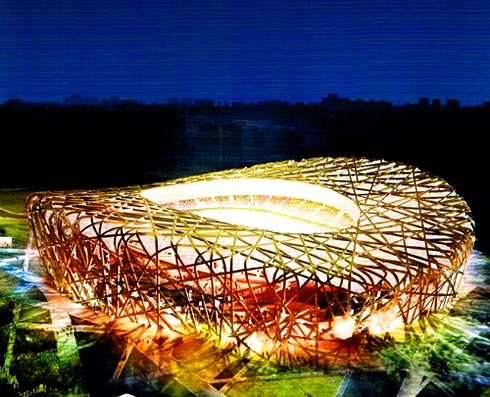| Videos | ? Latest |
|
? Feature | ? Sports | ? Your Videos |
International architecture in China

 0 Comment(s)
0 Comment(s) Print
Print E-mail CNTV, May 30, 2012
E-mail CNTV, May 30, 2012
In China, it's no exaggeration to say that construction sites of all sizes can be seen almost everywhere as the country heads down its path of urbanization.
As well as mega cities such as Beijing and Shanghai, it's common even in much smaller cities to find iconic landmarks built by architects from abroad. This has prompted people to ask, has China really become the world's new architectural playground? In the last episode of "designing the future", CCTV reporter Ai Yang takes a look at how the architectural scene is developing here.
Simon Persson works at a Chinese architecture firm. He left Sweden three years ago looking for professional opportunities. Compared with many of his international colleagues in the office, Persson was among the earliest to have started building his career in China. At the age of 29, he's already titled as senior architect.
Persson says, "I met a lot of western architects in China. Beijing has become a global working place, they can't get the same opportunity elsewhere."
In just three years, the number of international staff here grew from 2 to 15. And their designs are also becoming more creative. Persson's current project broke ground in Shanghai this month, and within a year, this (the model building in the picture) will turn into a car company's complex.
Persson also says, "Architects get more freedom in China, while in Europe more strict as they already know what the outcome should be exactly."
And this could be one reason why China today has become the base for so many eye-catching and even out-of-the-ordinary international works. Such as this.
Ai Yang says, the olympic stadium has become a symbol of China's modern mindset. It also summarizes the country's pursuit in cutting edge design. It is now seeking architecture that is iconic, international and bold.
 |
| File photo: Bird Nest in China |
Built like a bird nest, the Swiss design has become Beijing's pride. Despite having cost a sky high price of 3.4 billion yuan, people remember it for the grand events it hosted in 2008.
It's very nice but I'd also hope to see more Chinese traditional elements in the work.
It looks great, but I also think such iconic buildings should be designed by architects from home.
But in recent years overseas bidders have won some big projects in China, such as the French designed national theatre. Sat right next to the country's political center, it also has a price tag of a staggering 3.1 billion yuan.
Dr. Wu Chen from Royal Institution of British Architects says, "I think today's architectural trend will move towards more economic and environmental friendly buildings in the future across the globe. But it's also true that many international professionals, whether famous or not, all favor China as the land of opportunities. It seems everything can be done within a very short time here."
Urban construction has been the nation's core development for the last two decades, while China accounted for more than half of the world's cement consumption in 2010. As skyscrapers rise up from empty land and break into the skyline, the nation strives to become EVER more modernized with monument-like landmarks. Like Beijing's CCTV tower, Guangzhou's opera house, Hangzhou's animation museum, Shanghai’s world financial center, these and many more, are all works of international designs.
Wu also says, "Competition between local and international architects is a very complex issue. Many real estate developers go after extrodinary effects and prefer designers with a global background. In China we have some excellent architects that are just as good."
But Wu also believes Chinese professionals can still learn a lot from the west, especially as the nation's urbanization moves at such a fast pace. As well as designing buildings, environmental awareness and landscaping should all be an architect's considerations.





